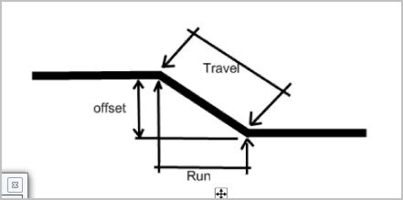john.banisky
New member
- Joined
- Dec 14, 2022
- Messages
- 1
I have two parallel pipes 23 apart (set) and 35 feet (run). I need the formula to figure how long my connecting ppipe should be and what the connecting angles will be on each end of the connecting pipe.. I can not use sine or cosine in figuring the angles.

